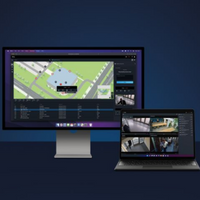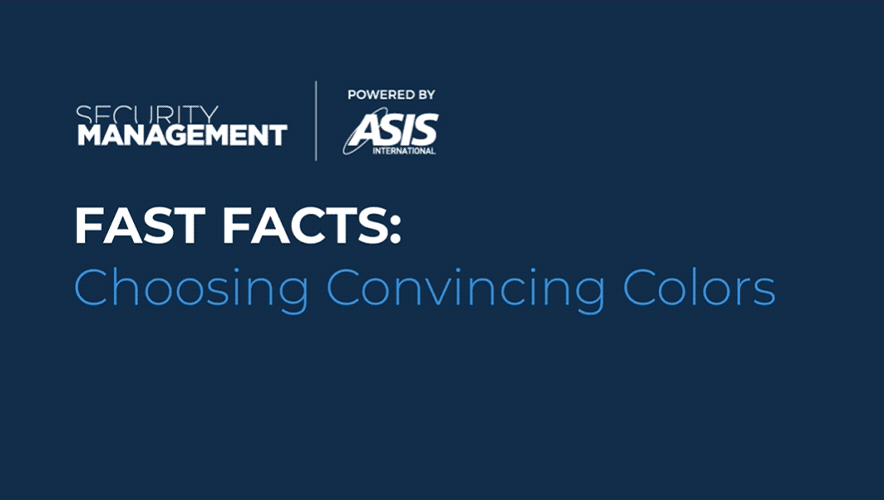How to Make Your Pitch More Convincing
Part of success relies on serendipity—being in the right place at the right time. But part of it relies on preparation. What should you do to positively position yourself when an initiative arises? Can you capture your target audience's attention? Whether you are trying to climb the corporate ladder, seek opportunities as a business owner, or get buy-in, it all comes down to a few tactical components.
Successful buy-in is a long game. The security industry functions mainly on practicality and a word-of-mouth system, so fostering professional relationships is crucial. Pitching something to anyone—especially if the request has a financial component—is easier when you have a previous accord, experience working together, or history. You will likely be more successful if you have established a relationship before approaching someone instead of meeting only when and because you need something.
When you create a relationship with a genuine connection, the rest follows—the guidance, conversations, and, eventually, opportunities.
Are You Convincing?
How credible your product/service is and how confident and convincing you are of its value to the management team or the organization makes or breaks buy-in. Just like anything else, however, each process has its complexities.
When preparing a buy-in proposition, you must research to ensure you have all the prominent elements. Ensure you are clear on the following:
- What you are proposing? Outline the goal, value proposition, outcome, and budget.
- Has this proposition been done before? If yes, are you doing anything differently or reinventing the wheel? How does your approach differ?
- Who are you approaching? Have you had previous encounters with them? How was that interaction? Do you think that individual had a good impression of you? If you have not met them before, can someone else make an introduction? It often helps when someone can vouch for you.
Not every person can pitch well. As much as we want to possess every skill, connection, and attribute, be honest and think about the bigger picture. One of the main questions you need to ask yourself is if you and your pitch match. Are you the right individual to present this idea? Do you need reinforcements? Or do you need a professional you could partner up with to help legitimize your idea?
This is not an invitation to doubt yourself. Ultimately, it is not necessary to bring someone else on board, and you can bolster your persuasiveness over time with self-reflection and self-improvement.
Conduct a quick quantitative and qualitative study—do other professionals or colleagues think your product or solution is relevant, trending, and valuable? This can help you prove and solidify your concept.
Work on every part of your delivery. Practice the substance and delivery style of your proposition: your communication skills, body language, and overall energy. Everything will be observed and taken into consideration.
Work on your visual presentation, from symbolism to language to functionality.
SponsoredWhat is the power of unification?Unifying video management and access control, along with other functions, reduces costs and improves efficiency. If your organization is thinking of moving towards unified security, you’re not alone. With Genetec Security Center 5.11, we make unification even easier. |
Symbolism. What colors are you using to represent your message? Do you want your presentation to be considered aggressive, assertive, friendly, approachable, inclusive, etc.? Colors can influence thinking, impact decision making, and sway moods. For instance, each color has its own symbolism, effect, and positive or negative association.
- Red represents action, strength, passion, and energy. It is motivational, stimulating, and confident. However, it can also represent anger, danger, and caution. This color is very popular in the security industry because we serve to mitigate risk and warn businesses and other professionals of perils.
- Yellow is usually a representation of optimism, positivity, and happiness. It is an amusing, energizing, and warm color.
- Green is a vivid color that highlights growth, health, nature, and revitalization. It makes people feel safe and secure, as it can also symbolize wealth, materialism, and prosperity.
- Blue is another color that is very popular in the security industry because it promotes feelings of security, trust, responsibility, and loyalty. This is an important color as its goal is opposite from the color red; instead of acting as a warning, blue is focused on protection, support, and peace.
Every color has its strength and unique value, which is why you must first identify what emotion your audience wants to exhibit when they see your brand and take it from there.
Comprehension. Make sure your copy is straightforward and doesn’t have spelling or grammar mistakes.
Functionality. Will you have any photographs or videos supporting your idea? If yes, ensure the media functions well. Imagine you ask a potential client to scan a QR code on your business card, and the code malfunctions. Unintentionally and naturally, the individual will think, “If they can’t get their QR code working, how will they get their security systems/service to work for me without any issues.” It is a psychological game; play it carefully.
Culture. Understand your crowd and the culture of the organization. Where is your audience from? Avoid scheduling introductory presentations on religious holidays, especially when you are primarily targeting a specific audience. Resources permitting, make a presentation in the audience’s language, too.
For internal buy-ins, you must thoroughly understand your company’s needs and the departments you are targeting. Is there anyone you can rely on in an external department to help with your pitch? Do you know the department's pain points, and could your pitch help solve them? Can you engage other members of your current team to collaborate on this idea? There are many factors and reactions at play, especially when new ideas are presented. You must understand who already supports you, who can back you up, and how the company’s culture might react; these factors will solidify your value proposition to improve internal operations.
These elements should help you comprehend if you and your current pitch are convincing. Be honest, ask the right questions, and seek truthful answers from different angles to avoid misunderstandings.
Networking and Relationships
Buy-in efforts start long before you launch your presentation, especially in security. Whether you work in the corporate world or are an entrepreneur, it significantly benefits you to foster relationships and maintain a close internal and external circle. You will automatically be associated with the circle you keep and the colleagues/professionals you identify with. To evaluate your immediate network, ask yourself:
- Is my circle a direct representation of who I am?
- If I end up being in a challenging situation, will they help or defend me?
- If I am happy, will they share my success with me?
- Can I learn and discuss my ideas without worrying about the confidentiality of the process?
- How do I feel when I am around these people in my life?
Additionally, you must think outside the box regarding networking and maintaining your reputation. Have you ever wondered what other professionals say about you behind your back? It is a tricky question to ask, but because of the nature of the security industry, it is an inevitable part of the game. It can also be anxiety provoking. Even though someone else's opinion should never directly reflect your worth, unfortunately, it can impact your career and professional growth. Just be aware of this fact, and ensure you are always faithful to yourself.
Social and Online Influence
Whether we like it or not, we have an online and social footprint. How do others interpret yours? What will someone think of you if they Google your name or company? Even for internal pitches, assume that your audience will do a little background research on you before your presentation—including on your personal social media. Nowadays, your social internal and external influence plays a significant role in how others perceive you within your corporate environment and as a fellow security professional. Unfortunately, not many of us leverage that to its full potential.
There are many benefits of building a solid online reputation as a long-term investment, especially on LinkedIn, because that is where most of the security demographic is located. Additionally, having a personal brand allows you to demonstrate the exact value you bring. It is about sharing your story, your expertise, and the knowledge you have collected to become the professional you are today.
To begin establishing your brand on LinkedIn:
- Ensure that your profile is up to date and showcases your current experiences accordingly.
- Try to keep your photo up to date.
- Find your content niche; for people to notice you, you need to be recognized for a specific topic. What is your differentiator? Where and how can you add value?
- Engage with other content and add professionals to your profile that will inspire you and help you develop professionally.
- Whatever strategy you decide to apply to your brand, you need to stay consistent for months to see organic growth. Your reputation will be built over time.
Executing the above points is ultimately a long-term investment toward your professional credibility. When you develop a positive online reputation, it demonstrates reliability, trust, and expertise. When management and other professionals see that you have an audience and engagement online, they are more likely to naturally gravitate to your ideas. Therefore, you create space for future collaborations and pitches.
Getting yourself involved with associations and meeting like-minded people you can learn from is the best thing you can do for your social and online professional presence and career. Exposing yourself to different opportunities can be very fruitful; you never know what stepping out of your comfort zone can bring you. Additionally, interacting with different groups online exposes you to different corporate cultures, structures, and mannerisms, which ultimately will help you understand organizational nuances and create buy-in presentations and materials that are inclusive and diverse.
Most buy-in pitches target specific groups, individuals, or professionals. Therefore, building that accord beforehand is vital to gain their attention when the right opportunity comes along. Because if the individual's behavior, ideas, and ethics are aligned, it is easier to showcase a specific program or product.
In the security industry, many strategic discussions happen behind the scenes, and that is genuine relationships are formed. You must open the curtains and see from which performance you can learn from most, then apply it to your show.
Suzanna Alsayed is the founder of Evolutz, Inc., an independent global branding, marketing, copywriting, and website development agency. Evolutz’s mission is to help businesses and professionals within various industries, with a particular specialization and focus vis-à-vis tech and security sectors. Alsayed was awarded several global influencer awards and is among the Top 30 under 30 Alumni for York University (2022). Alsayed has two bilingual bachelor's degrees and a master's degree; she is a lifestyle writer, world traveller, content creator, and polyglot. She is currently writing a self-help book targeted to be published in 2023.

















